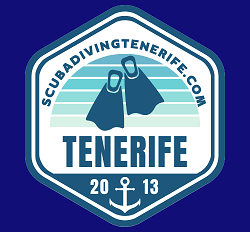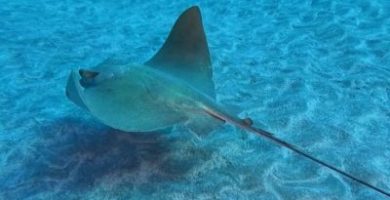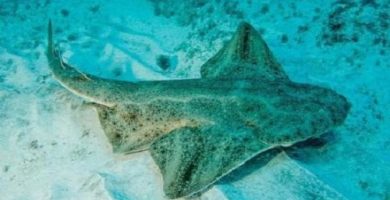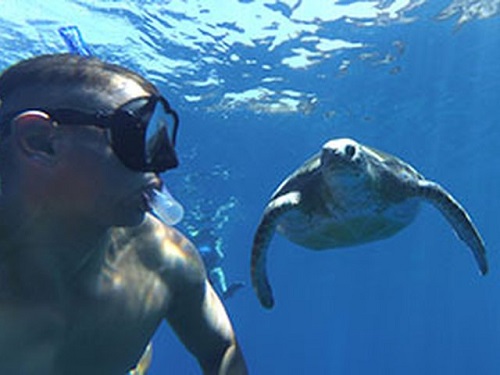
Tenerife is a privileged place for the observation of these majestic creatures. If you want to see sea turtles in their natural habitat we tell you what you should know about where to find sea turtles in Tenerife, which are the species that inhabit its waters, what is the best time to watch them and how to do it responsibly.
Kayaking with dolphins and snorkeling with turtles
Enjoy an exciting kayak route from Los Cristianos to Palm-Mar, where you will live an unforgettable experience with the marine fauna.
During the tour you will be able to scream with dolphins in the wild, creating a unique bond with these incredible animals.
Once in Palm-Mar, a guide will accompany you to the place where the turtles live to snorkel with them in a respectful way.
Watch the video of the activity!
Always remember to care for and respect the animals and the environment during this unique experience.
Where can I see turtles in Tenerife?
Sea turtles can be found in the warm waters of Tenerife, mainly in the coastal areas of Tenerife south. These are the dives where you are most likely to find them, but remember that you are never 100% guaranteed to see them because they are wild animals.

Diving in Abades
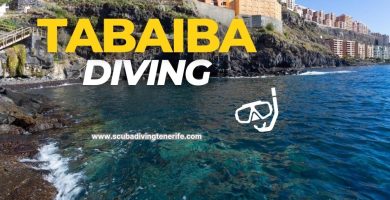
Diving in Tabaiba
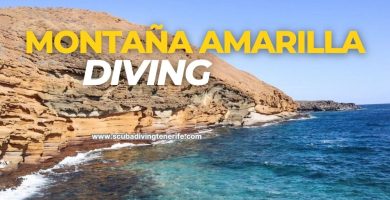
Diving in Montaña Amarilla (Yellow Mountain)
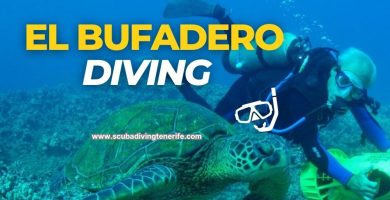
Diving in Bufadero (Palm-Mar)
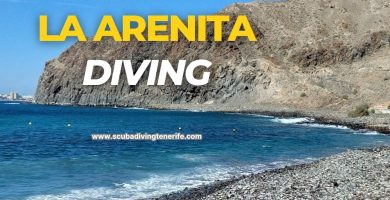
Diving in La Arenita (Palm-Mar)
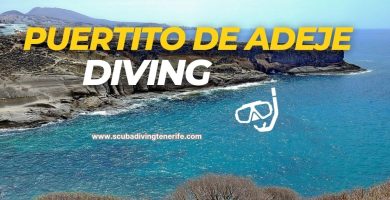
Diving in Puertito de Adeje (Armeñime)

Diving in Alcalá
What is the best time to see sea turtles in Tenerife?
In Tenerife, sea turtles can be sighted all year round, but the best times to see them are in spring and summer, when the water is warmer and the turtles come to the surface to sunbathe and breathe.
During these times, it is also more likely to see juvenile turtles, which tend to move closer to the coast in search of food and shelter. However, it is important to keep in mind that sighting sea turtles in their natural habitat is not guaranteed and may depend on factors such as climate and geographic location.
It is important to be patient and respect the safety distance so as not to disturb these animals in their natural environment.
What species of turtles can be seen in Tenerife?
In Tenerife you can see mainly two species of sea turtles: the loggerhead turtle (Caretta caretta) and the green turtle (Chelonia mydas). We tell you the most interesting facts about each of them:
Green turtle (Chelonia mydas)
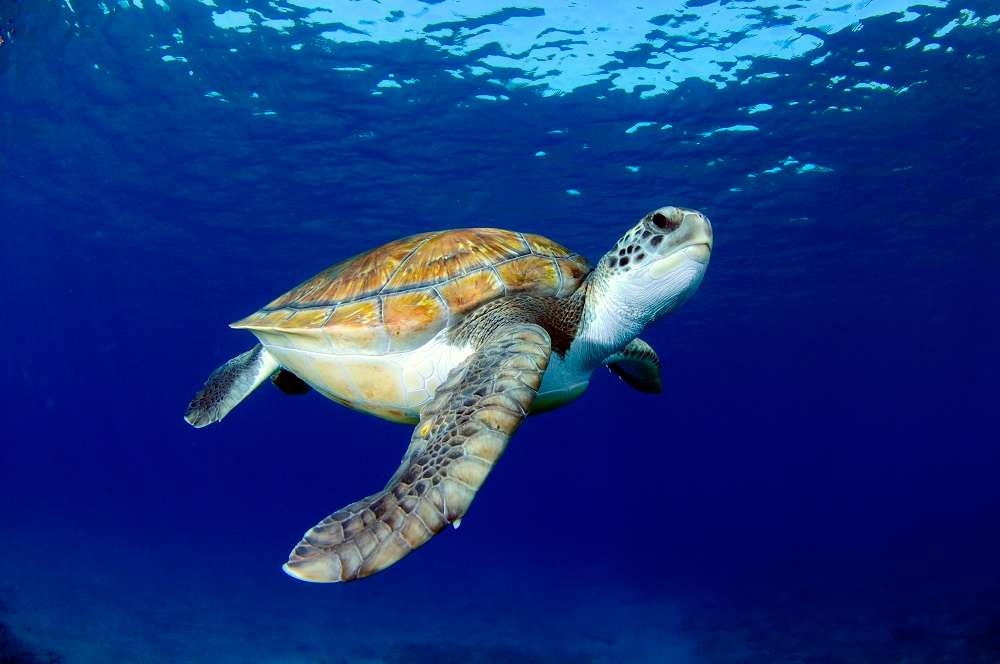
- The green turtle is the largest sea turtle species after the leatherback turtle.
- They can weigh up to 300 kg and measure up to 1.5 meters in length.
- Despite their name, their shells are not always green. They can vary in shades of brown, yellow and black.
- Green turtles feed mainly on seaweeds and seagrasses, and can consume up to 1.5 kg of vegetation per day.
- During its lifetime, a green turtle can travel thousands of miles and return to the same beach where it was born to nest.
- They are migratory animals and travel long distances in search of feeding or breeding areas.
- Although green turtles are known for their longevity, their survival rate is very low. Only one in a thousand sea turtles reaches adulthood.
- Green turtles play an important role in the marine ecosystem by eating seaweed and seagrasses to help maintain the balance of ecosystems.
- Despite being a protected species, the green turtle still faces threats such as bycatch, habitat destruction and pollution.
Tortuga boba (Caretta caretta)
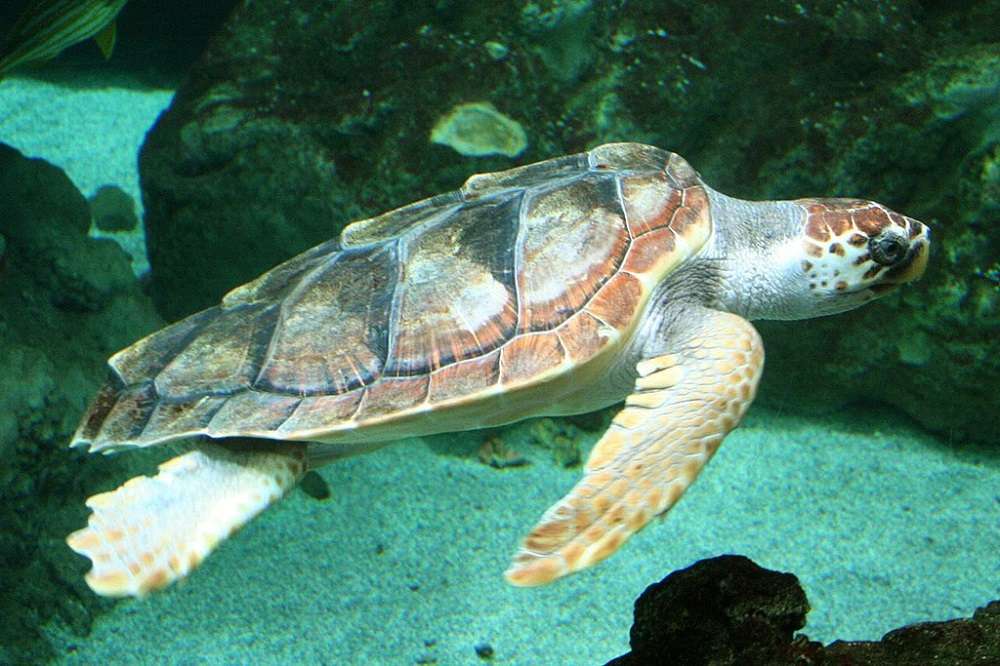
- The loggerhead turtle is known for its longevity, living up to 80 years in the wild.
- Unlike other sea turtle species, female loggerhead turtles do not reach sexual maturity until 20-30 years of age.
- Loggerhead turtles can migrate thousands of miles between feeding and nesting sites. For example, some loggerhead turtle populations in the western Atlantic move from the Florida and Caribbean coasts to West Africa to nest.
- The loggerhead turtle is an endangered species, mainly due to loss of its natural habitat, pollution, incidental fishing and poaching for eggs and meat.
- During the nesting season, females may lay up to 100 eggs in a single nest, and may make up to 5 nests per season.
- Despite its common name, the loggerhead turtle is not dumb. In fact, it is very cunning and can be very difficult to capture or handle.
- Loggerhead turtles feed on a variety of prey, including jellyfish, crabs, lobsters and other crustaceans. They are also known to eat seaweed and marine plants in small quantities.
- Loggerhead turtles can be bred in captivity for conservation purposes, and successful programs have been carried out to release juvenile turtles into the wild to help increase wild populations.
Other species
Occasional sightings of leatherback turtles (Dermochelys coriacea) and hawksbill turtles (Eretmochelys imbricata) have also been reported, although they are less common in the area.
Curiosities about sea turtles
- Sea turtles have an incredible capacity for navigation. There have been recorded cases in which they have swum more than 13,000 kilometers in a single trip.
- Although sea turtles spend most of their lives in the ocean, they have a keen sense of smell and can detect the odor of food from miles away.
- Sea turtles have an impressive longevity, some species can live up to 100 years in the wild.
- Sea turtles have a varied diet that includes jellyfish, crustaceans, mollusks, algae and plastic remains have also been found in their stomachs.
- The incubation temperature of sea turtle eggs determines the sex of the hatchlings. At lower temperatures, males will hatch, while at higher temperatures, females will hatch.
- Sea turtles are very strong animals and can weigh up to 900 kilos in the case of the leatherback turtle, the largest of all species.
- Sea turtles have an internal navigation system that allows them to find their way back to the beaches where they were born, to lay their own eggs.
- Sea turtles are migratory animals and travel great distances to feed, mate and lay their eggs.
- In some cultures, sea turtles are considered sacred and have an important spiritual significance.
Habitat and feeding habits of the Tenerife sea turtle
Sea turtles in Tenerife inhabit warm, tropical waters and feed mainly on jellyfish, crustaceans, algae and marine plants.
During the breeding season, turtles may travel hundreds of kilometers from their feeding grounds to nest on the beaches of Tenerife.
Sea turtles are endangered species and it is essential to protect their natural habitat to ensure their survival. Therefore, it is important to follow the regulations and responsible practices for observing and photographing sea turtles in Tenerife.
Conservation status of sea turtles
In general, all species of sea turtles that inhabit Tenerife are in danger of extinction.
The main threat to these turtles is human activity, which includes pollution, hunting and incidental fishing, habitat degradation and climate alteration. For this reason, various conservation and protection measures have been established, such as the regulation of fishing, waste disposal, education and awareness of the local population and tourists, and the collaboration of organizations and governmental entities for the protection of the species and its natural habitat.
Despite these efforts, much remains to be done to ensure the survival of these sea turtles in Tenerife.
How to photograph turtles while diving or snorkeling?
Photographing sea turtles can be an exciting experience, but it is important to take into account some tips to ensure a responsible and respectful observation of these animals. Here are some tips for photographing sea turtles:
- Keep a safe distance: It is important not to get too close to the turtles, to avoid disturbing their natural behavior. If you get too close, you may cause the tortoise to become frightened and move away.
- Use a suitable camera: If you have a camera with optical zoom, it is better to use it instead of digital zoom. Digital zoom can decrease the quality of the image.
- Lighting: The best time to photograph tortoises is early in the morning or late in the afternoon, when the sun is not so strong. If you use flash, you should do so sparingly and avoid using it directly in the tortoise’s eyes.
- Do not touch turtles: It is important not to touch sea turtles, as this can cause stress and damage their shells.
- Respect their habitat: You should not disturb or chase turtles to take pictures. It is important to keep a safe distance and not get too close to them.
- Pacience: Sea turtles can be shy and difficult to photograph, so it is important to be patient and wait for the right moment to take the picture.
Remember that responsible observation of sea turtles is key to their conservation and preservation in the environment.
Tips for the responsible observation of sea turtles in Tenerife
- Keep a safe distance and do not interfere with their natural behavior.
- Do not touch or feed sea turtles.
- Do not leave garbage or waste in the natural environment.
- Do not use flash or other devices that may alter your vision.
- Do not pursue or harass them with boats or other means.
- Do not remove sea turtles from their natural habitat.
- If an injured or endangered sea turtle is found, contact the appropriate authorities for attention.
- Respect the regulations and laws for the conservation and protection of sea turtles.
- Participate in sea turtle conservation and education activities in Tenerife.
- Take photographs and videos of sea turtles in a responsible manner, without disturbing or harming the animals and without disturbing their natural environment.
